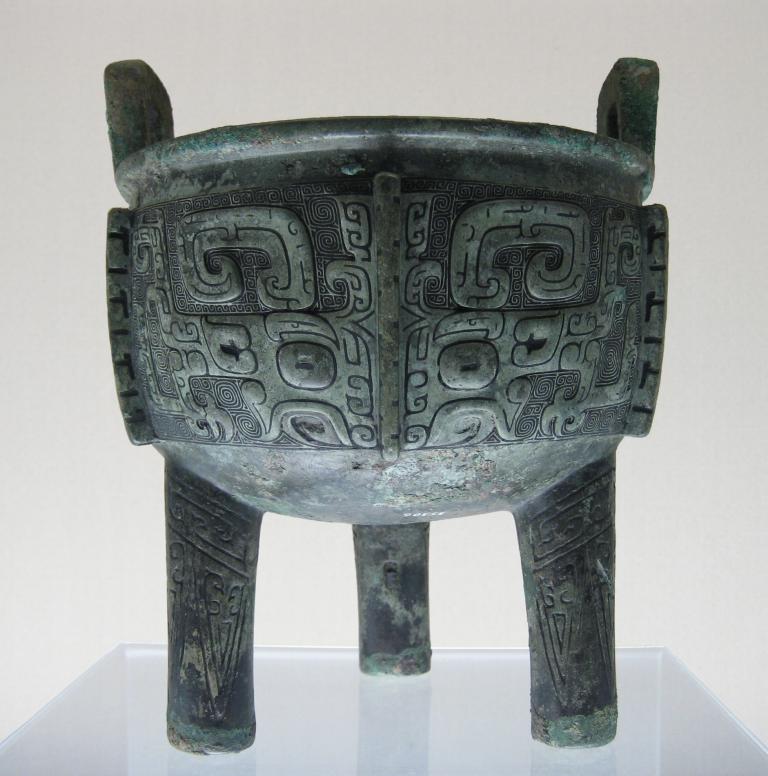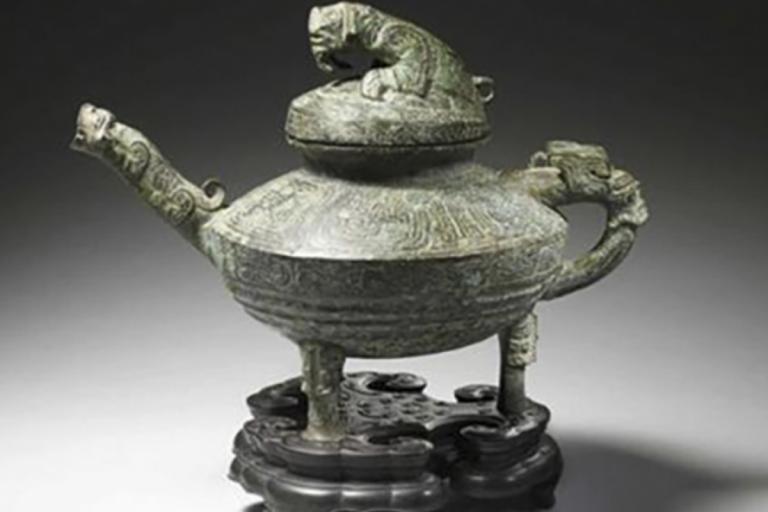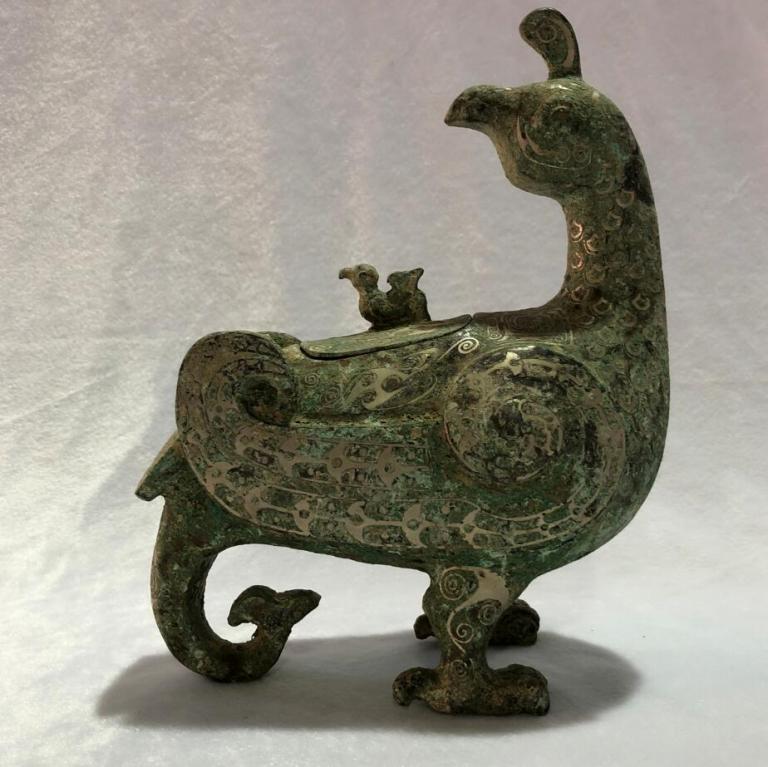Ancient Bronze Sculptures
5 min readIn 1986, two sacrificial pits were excavated on an ancient site in Sichuan called Sanxingdui, and rare treasures were unearthed: more than one thousand ancient utensils including bronze vessels, jade articles and gold vessels were piled very orderly in the pits dating back to the late Shang Dynasty and the early Zhou Dynasty. Ancient people in Sichuan offered sacrifices to the gods of nature, heaven, earth, mountains and rivers on this site.

The most special and influential archeological finds from Sanxingdui were a bronze standing figure sculpture, bronze head sculptures and bronze masks. Archaeologistsoriginally thought there was no bronze figure sculpture in China before the Zhou Dynasty. This discovery changed this conclusion with epoch-marking significance.
The whole bronze standing figure sculpture from Sanxingdui is 262 centimeters tall, the figure is 182 centimeters tall, and the base is 80 centimeters tall. People must look up to see the standing figure sculpture, which seems quite sublime and solemn.
Meanwhile, this sculpture of a person with two big eyes,a straight nose,a square lower jaw and two big ears wearing a long robe with buttons to the left on the forepart and anklets provides valuable information for studying the physical makeup and clothes of ancient people in Sichuan. The bronze fiqure’s overcoat is carved with dragon patterns, unusual beast patterns, cloud patterns, mountain patterns, etc.neatly and thickly. According to The Book of History, dragons, animals, the sun, the moon, mountains and other images were usually drawn on ancient rulers’ clothes, banners and flags. This seems to show that the bronze figure should be a person in the ruling class.

Apart from the bronze standing figure sculpture, most bronze sculptures unearthed from Sanxingdui were single head sculptures or masks. The facial features of these head sculptures are very special, and the shapes of the eyes and ears are especially exaggerated. Located at the most important positions on the heads, they are much bigger than real ones. According to the characteristics of their face shapes, they can mainly be classified into two types: bony faces, looking solemn and cold; round faces, looking mild and amicable. What’s more amazing is that there is also a bronze head sculpture wearing a gold mask, which constitutes a huge question mark with the gold staff unearthed together with it-Were ancient people in Sichuan natives or immigrants? No similar circumstance is seen elsewhere in China, but it is amazingly similar to countries like ancient Egypt. All remote cultures seem mysterious to us, and their secrets cannot be probed easily.
There are also some big bronze masks among the sculptures from Sanxingdui.
They look like both humans and beasts, or are just gods. The biggest one is 65 centimeters tall, and the ears are 138 centimeters from each other. The two eyes looking far ahead and two halberd-shaped ears perhaps imply “clairvoyants and clairaudients”, capable of watching and listening in all directions. Another mask is less big but more peculiar than this one: it has a forehead ornament in the shape of a Kui dragon 68 centimeters tall. Some people think that this is the image of Cancong, the earliest ancestor of ancient people in Sichuan and that the extremely exaggerated facial features manifest their ancestor’s superhuman abilities; some people think that this is an infinitely resourceful god worshipped by ancient people in Sichuan.
Besides, some other types of bronze sculptures were unearthed from Sanxingdui, also having peculiar and mysterious shapes.
A bronze divine tree 395 centimeters tall has a huge shape. It is generally thought to be a sacrificial utensil capable of linking earth and heaven and communicating between humans and gods. The divine tree consists of several sections, includinga thick trunk and a ribbon base on top. Archaeologists infer that there used to be a big iron bird on it. The existing divine tree has three levels, and three branches with fruit and birds extend from each level. There are records about divine trees in ancient books-for example, the”huge mulberry tree”in The Classic of Mountains and Seas refers to a huge tree beyond the see in legends where the sun rises. In terms of cultural meanings, this huge bronze divine true is perhaps more peculiar. Laozi said in Tao Te Ching:”The way begets one; one begets two; two begets three; three begets the myriad creatures.”The divine tree’s trunk consists of three levels and nine branches, and “nine”is consistent with views on “the most revered and respected”.
There is also aclimbing dragon beside the tree. Therefore, apart from communicating between heaven and earth, this tree perhaps also symbolizes the vast universe.
A bronze sun wheel is also one of the most mysterious utensils unearthed from Sanxingdui. For man, the shining sun is undoubtedly the most important celestial body in the universe. In the history of human development, the sun was always worshipped by people. Ancient Chinese people worshipped their ancestor the Yan Emperor as the sun god, and in ancient Greek mythologies, the sun god is the King of the Gods Zeus’ son. The sun wheel from Sanxingdui is obviously also related to sun worship. In the agricultural society, sun worship was a certain phenomenon. What’s incredible is that the wheel symbolizing the sun is evenly divided into five parts.
Ancient people usually liked symmetry for its beauty and simplicity. For example, agold ornament in the shape of a sunbird unearthed from the Jinsha Culture sharingthe same origin with the Sanxingdui ancient Sichuan culture emits 12 rays. We know that dividing a circle into five even parts was a very difficult thinking when measuring techniques were still very backward. So why did ancient Sichuan people pursue complexity instead of simplicity? Perhaps we can find clues from the Jinsha sunbird.
Its 12 balanced, flowing and rotating rays and four symmetrical totem sunbirds constitute a soul-shaking picture, but this design does not just have decorativefunctions. Ancient Sichuan people had embodied the fundamental properties of the sun in this divine thing:12 and 4, representing 12 months and four seasons in a solar year. This shows ancient Sichuan people’s deep understanding of astronomy and calendars. We can infer from this that the bronze sun wheel might also contain information about astronomy and calendars.
After the major archaeological discovery in 1986, large ancient cities and many cultural sites and relics were also discovered at Sanxingdui, showing it was already a highly developed cultural center more than 3,000 years ago. This also shows the glorious art of bronze sculptures from Sanxingdui is not accidental, but a bright highlight in the history of a civilization.









